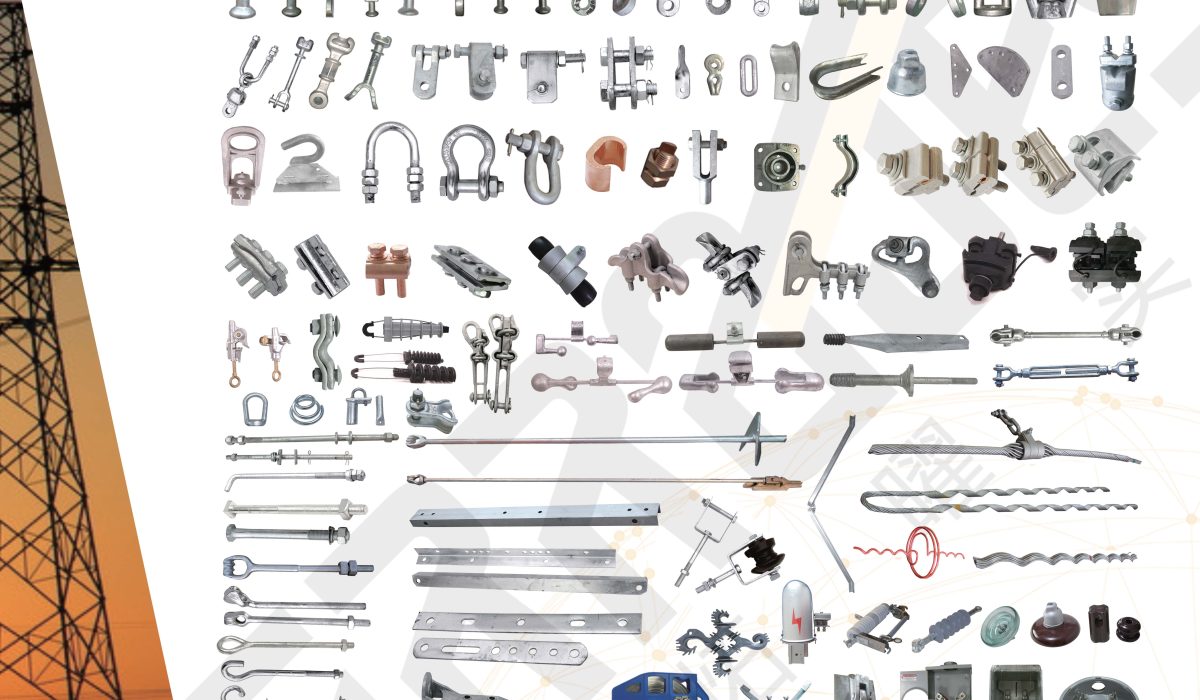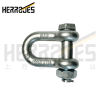Classification Of Power Line Fittings
Iron or aluminum metal accessories widely used in power transmission lines are collectively referred to as fittings. There are various types of metal fittings with different uses, such as various wire clamps used for installing wires, various hanging rings that make up insulator strings, various pressure connecting pipes and repair pipes connecting wires, various types of spacer bars on split wires, etc. In addition, there are various types of stay wire fittings used for poles and towers, which are related to the size of the wires used for protection and need to be coordinated with each other.Most metal fittings need to withstand significant tensile force during operation, and some also need to ensure good electrical contact, which is related to the safety of wires or towers. Even if one of them is damaged, it may cause line faults. Therefore, the quality, correct use, and installation of fittings have a certain impact on the safe power transmission of the circuit.
1. According to their function and structure, they can be divided into categories such as suspension clamps, tension clamps, UT clamps, connecting fittings, connecting fittings, protective fittings, equipment clamps, T-shaped clamps, busbar fittings, stay wire fittings, etc; It can be used as line fittings and substation fittings according to its purpose.
2. According to the unit of electric power fittings, they are divided into four categories: malleable cast iron, forging and pressing, aluminum copper aluminum, and cast iron.
3. It can also be divided into national standards and non national standards
4. According to the main performance and purpose of fittings, they can be roughly divided into the following categories
1) Suspension fittings, also known as support fittings or suspension clamps. This type of hardware is mainly used for hanging wire insulator strings (mostly used for straight towers) and hanging jumper wires on insulator strings.
2) Anchor fittings, also known as fastening fittings or wire clamps. This type of hardware is mainly used to fasten the terminal of the wire, fix it on the durable insulator string, and also for fixing the terminal of the lightning protection line and anchoring the stay wire. Anchor fittings bear all the tension of wires and lightning rods, and some anchor fittings become conductive materials
3) Connecting fittings, also known as wire hanging parts. This type of fittings is used for connecting insulators into strings and for connecting fittings to fittings. It bears mechanical loads.
4) Connect the fittings. This type of hardware is specifically designed for connecting various bare conductors and lightning rods. The splicing bears the same electrical load as the wire, and most of the splicing fittings bear all the tension of the wire or lightning rod.
5) Protective hardware. This type of hardware is used to protect wires, insulators, etc., such as the grading ring used to protect insulators, the heavy hammer used to prevent pulling out of insulator strings, and the anti vibration hammer, protective rod, etc. used to prevent wire vibration
6) Contact with hardware. This type of hardware is used for connecting hard and soft busbars to the output terminals of electrical equipment, T-joints of wires, and non load bearing parallel connections. These connections are electrical contacts. Therefore, high conductivity and contact stability are required for the contact fittings.
7) Fixed fittings, also known as power plant fittings or high current busbar fittings. This type of hardware is used for fixing and connecting various hard or soft busbars and pillar insulators in power distribution devices. Most of the fixing hardware is not used as a conductive body, but only for fixing, supporting, and suspending purposes. However, since these fittings are used for high currents, all components should have no hysteresis loss.


